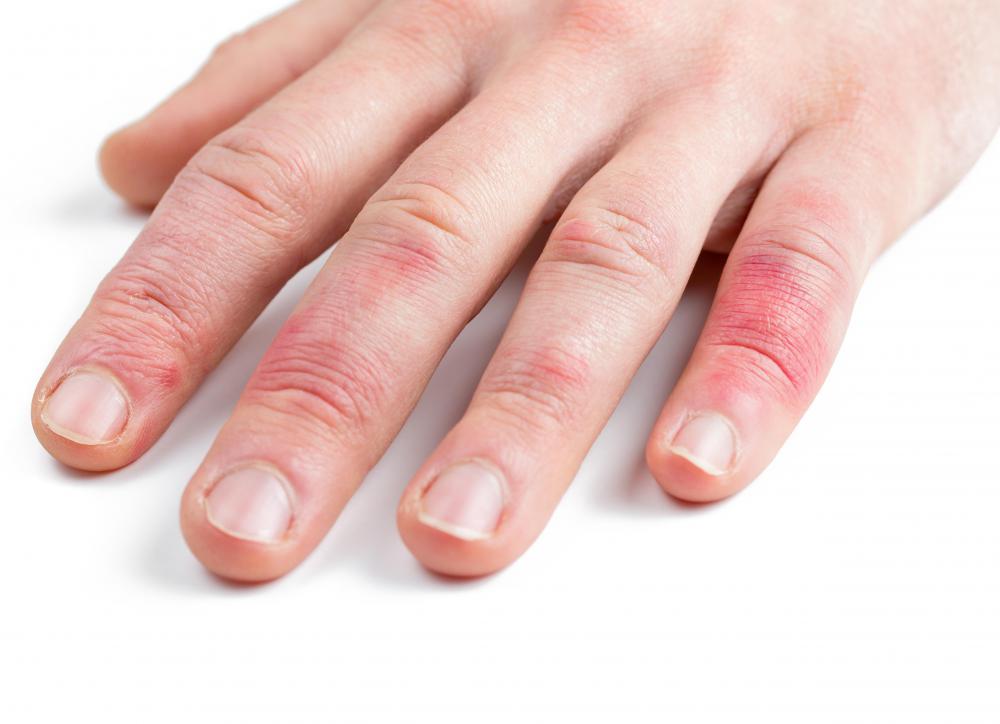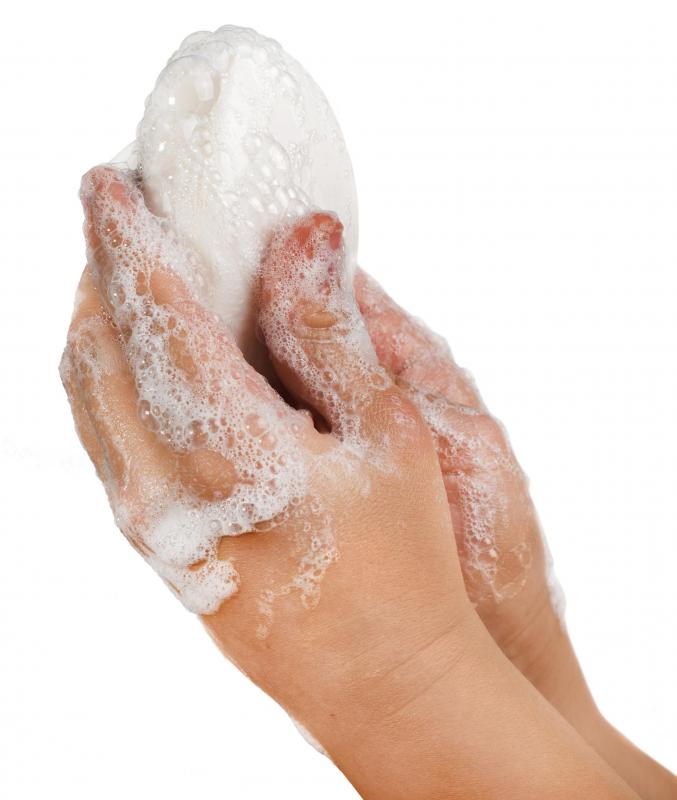At TheHealthBoard, we're committed to delivering accurate, trustworthy information. Our expert-authored content is rigorously fact-checked and sourced from credible authorities. Discover how we uphold the highest standards in providing you with reliable knowledge.
What is Dyshidrotic Eczema?
Dyshidrotic eczema is a skin condition affecting the hands and feet that consists of small blisters. Itchy, fluid-filled blisters appear suddenly on the hands or feet, and in advanced cases, the affected skin can thicken or become scaly. Doctors do not know the cause of this condition, but it is not contagious. It often recurs and can become chronic.
Dyshidrotic means "bad sweating", and it was once believed that dyshidrotic eczema was a sweat gland disorder, but many sufferers do not experience excessive sweating. The fluid inside dyhidrotic blisters is not sweat, but serum, a liquid that comes from the blood vessels. This type of eczema affects male and female patients equally and may occur any time from early childhood to late adulthood, though the mean age of sufferers is 38.

The blisters formed by dyshidrotic eczema may itch or be painful. They do not break easily, but they can burst if scratched. If broken, the blisters release clear fluid, causing the skin to crust and become dry. Eventually, the skin can become dry to the point of cracking and can take months to heal. Soap and water can worsen the condition.
Possible triggers for this condition include excessive sweating, stress, chlorinated water, sunlight, allergic reaction, and infection. Keeping affected areas moist or covered can make the condition worse. Exposure to soap, detergents, fruit juice, or raw meat may be a trigger in some cases. Some allergies linked to dyshidrotic eczema include caffeine, alcohol, foods with high nickel content, and dust mites. Genetic factors may also contribute to the disorder.

The suspected triggers of dyshidrotic eczema can be often treated with stress counseling and dietary changes. The symptoms can be treated with topical remedies such as aloe vera, a plantain oil preparation, lavender oil, white vinegar, or saline solution. Sometimes light treatment, eczema medication, ciclosporin, or topical steroids are prescribed. Patients suffering from dyshidrotic eczema should avoid water-based applications, hand sanitizing products, soaps with sodium laurel sulfate, and washing affected areas in hot water. Band-Aid® brand liquid bandage can help with healing if the skin has cracked.
AS FEATURED ON:
AS FEATURED ON:


















Discuss this Article
Post your comments